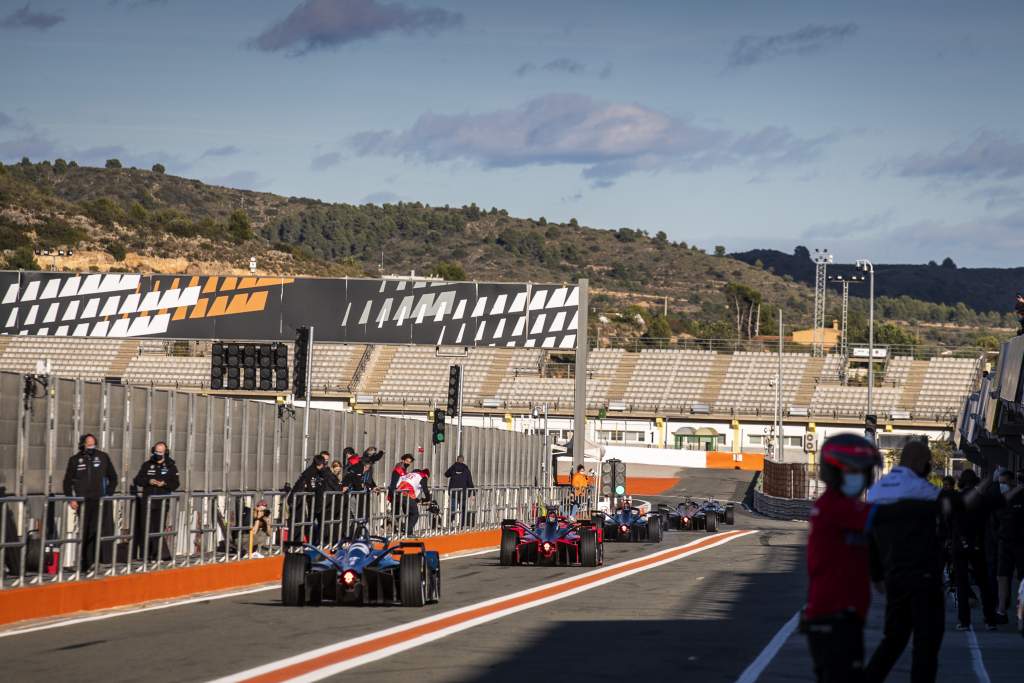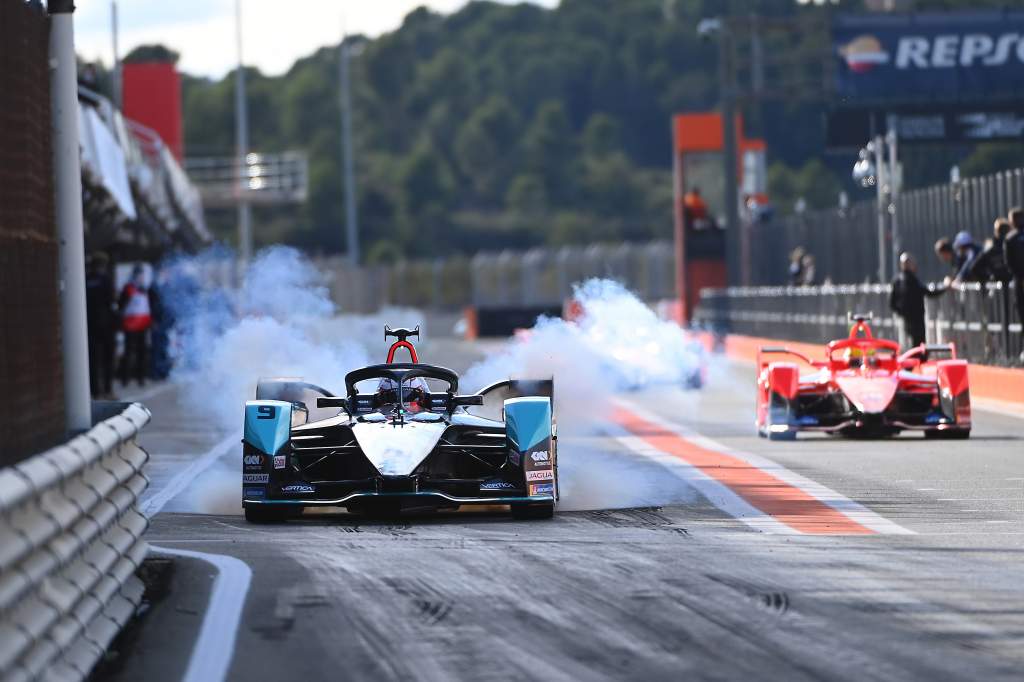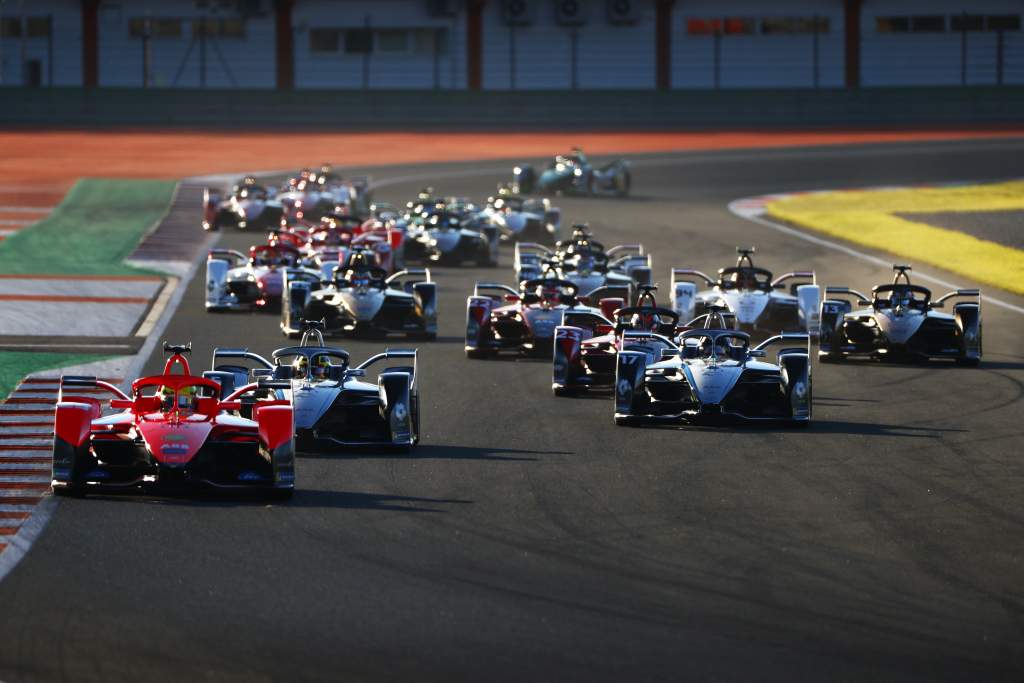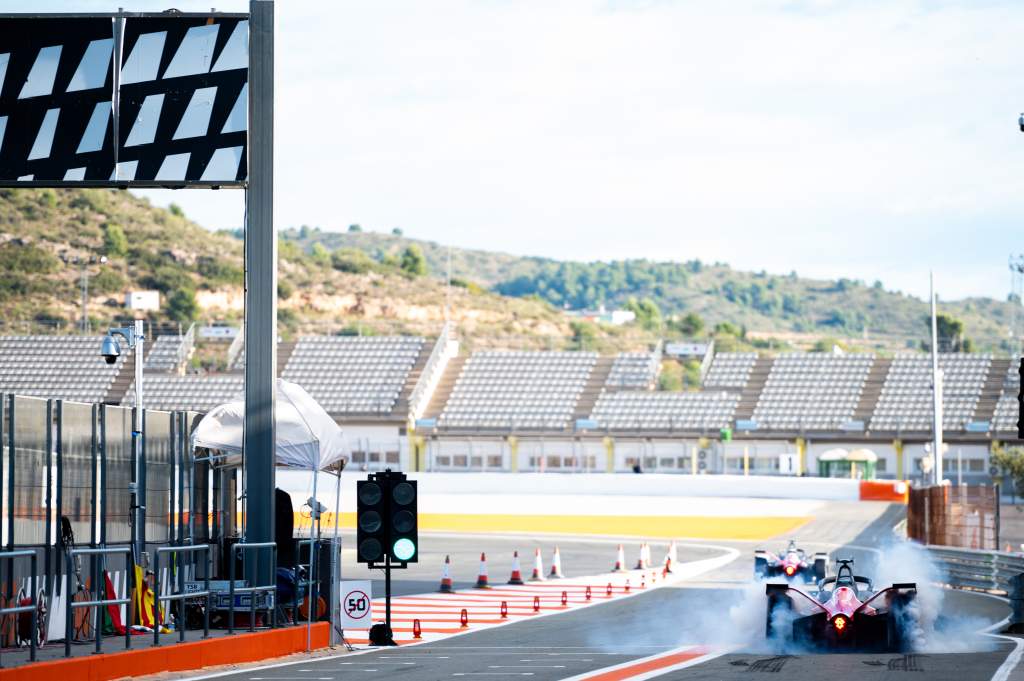Subtle changes to the qualifying format for the 2022 ABB FIA Formula E world championship season could be made after a trial of the system was completed in Valencia earlier this week.
The Race has learned that some lobbying from teams for an increase in allocated time for the qualifying groups has taken place in Valencia in a specially arranged Sporting Working Group at the Spanish track held on Wednesday afternoon.
The discussions may result in a two-minute extension in running time in the first phase of the session and further clarity on specifics of the pitstop rules during the two group sessions.

The current set of regulations dictates a 10-minute period for each of the two groups of 11 cars. However, this could now be set at 12 minutes if a special e-vote on the matter yields a unanimous agreement from the teams in the coming days.
Several teams and drivers are known to have suggested to the FIA and Formula E that an extra two minutes would be beneficial, especially because getting called into the FIA technical box for random weight checks will be part of the session.
Additionally, the 10 minutes was also found to be marginal to complete the requisite out, build and push laps that could be required on some of Formula E’s more grip-sensitive street tracks.
Talking about a possible extension for the group stages, Nissan e.dams driver Sebastien Buemi told The Race that “if you extend a little bit, then everyone can do [their full run]”.

“Then everyone could basically stop at the FIA [weight check] and still be safe. Of course, I don’t know whether they can do that. If they want to do that and if TV allows that – you know it’s a complex matter,” added Buemi.
His Nissan boss Tommaso Volpe confirmed to The Race that an extension to 12 minutes had been requested, saying that one of the things the teams were in consultation over was “a little bit of time to feedback before it gets official is to touch a little bit the time”.
“I guess the testing on Monday was exactly done for that, in order to give all teams, the opportunity to [discuss] anything that was not foreseen before, which is normal,” added Volpe.
The FIA’s Pablo Martino confirmed that some operational adjustments were identified to refine the format plans following input from teams and drivers.
“We are ready to make the final statement on how it will be during the season,” said Martino.
“We really think that it’s going to be big change for everyone, not only for us here in race control, but also for the teams – but they are ready for that.
“That was the most important part of the of the exercises we did on Monday, and also Tuesday for a race [simulation].

“Basically, we already thought that the race format is much easier to understand perhaps than the new qualifying format, but seeing how it evolved on Monday, we are also confident that people will quickly understand how the new qualifying is done and how the new grid is done for next season.”
The possibility of permanently reverting the groups to a one-car-per-team split, as will be used for the first race in Diriyah and was trialled on Monday, was mooted but ultimately isn’t set to be pushed through.
Groups will therefore instead be formed on the basis of the championship standings.
Some teams have told The Race that they have suggested a one-per-team split would be a preferable system to try and stop strategic scenarios where teams can use their cars to potentially slow down rivals and impact final push laps in the session.
The operational adjustments were the purpose of the specific Sporting Working Group with all of the relevant stakeholders. Those evolutions will then follow the validation process within the FIA, and, according to the stability of rules principle, be submitted to the agreement of the FE teams, then to the FE committee, the Electric and New Energy Championship, and to the World Motor Sport Council in mid-December.





